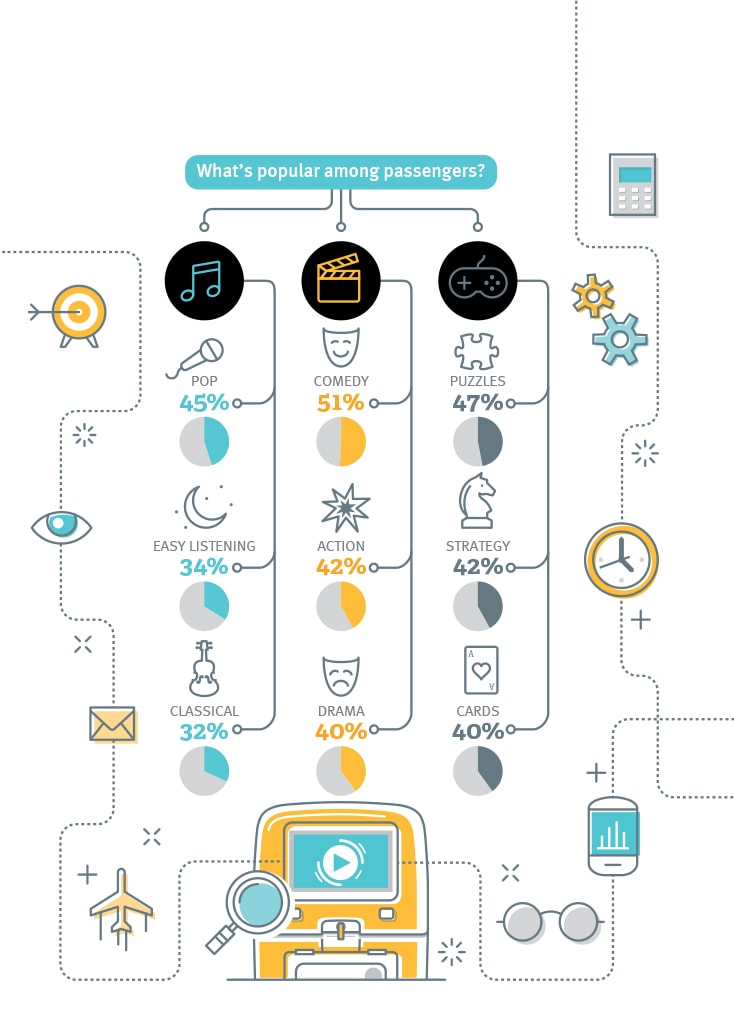IFE Data Informs Airline Content Curation
Share

APEX Insight: Stats collected through in-flight entertainment systems may play a pivotal role in helping airlines and content service providers curate content.
Today’s in-flight entertainment system platforms help airlines make smarter content buys, tailored to their customers’ preferences. Megan Worley, program manager, Inflight and Admirals Club Entertainment and Connectivity at American Airlines, explains that it’s all about data.
“The utilization and integration of data with programming strategy is becoming more prominent year after year,” Worley says. “We are able to see how individual content files – movies, TV shows, music, games – are performing each month and then use that information to curate the next cycle’s content set.”
“We are able to see how individual content files … are performing each month and then use that information to curate the next cycle’s content set” – Megan Worley, American Airlines
For performance analysis, Worley focuses on “uniques,” the minimum number of times a content file was accessed by individual users, and “duration,” how long a file was accessed. “We can drill down to specific seat number data, including the time and duration a content file was accessed. This allows us to slice the usage data in numerous ways according to our analysis needs, which in turn shapes our programming strategy,” she says. That, in turn, could also affect content acquisition and purchasing strategies.
 Audience measurement has played a role in TV programming since as early as the 1950s, but data-driven programming for in-flight entertainment is continually being tested. “I imagine in the next five years we’ll be able to dynamically update our content based on real-time usage statistics,” Worley forecasts. With more emphasis on analytics, she envisions that “The focus of the content service providers and media integrators will shift from the manual transfer and upload of files to real-time analytics of file performance.”
Audience measurement has played a role in TV programming since as early as the 1950s, but data-driven programming for in-flight entertainment is continually being tested. “I imagine in the next five years we’ll be able to dynamically update our content based on real-time usage statistics,” Worley forecasts. With more emphasis on analytics, she envisions that “The focus of the content service providers and media integrators will shift from the manual transfer and upload of files to real-time analytics of file performance.”
Of course, as with at-home TV markets, the proliferation of personal devices throws a kink into streamlined analytics strategies. Up in the air, wireless in-flight entertainment (wIFE) platforms can consolidate analytics with seatback systems, but “It depends on a few factors, including various vendors and what their systems offer analytics-wise,” says Michael Reilly, customer success manager at Arconics, which offers CloudStore, a wIFE platform.
Reilly notes that wIFE analytics is capable of offering richer data about device and media consumption preferences. “In our view, truer viewing preferences become more visible with bring-your-own device analytics, because we’re not just tracking ‘how many times a movie was watched,’ which is easy to do,” he says. “The richer the data, the better the picture of what customer preferences are, what they clearly like and dislike, what they are willing and not willing to pay for and more.”
“Data-Driven Programming” was originally published in the October/November issue of APEX Experience magazine.


